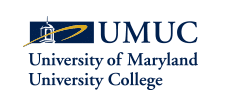CBE: The UMUC Approach
CompetencyWorks Blog
 University of Maryland University College is preparing to offer its first undergraduate competency-based program this fall in Computer Networks and Cyber Security. The preparation for the kick-off began in 2010 when the entire undergraduate curriculum was redesigned to an outcomes-based approach. At the time, this 2015 program wasn’t even on the radar, but the outcomes approach provided an excellent springboard to a competency-based program, and the lessons UMUC learned may be helpful to other institutions.
University of Maryland University College is preparing to offer its first undergraduate competency-based program this fall in Computer Networks and Cyber Security. The preparation for the kick-off began in 2010 when the entire undergraduate curriculum was redesigned to an outcomes-based approach. At the time, this 2015 program wasn’t even on the radar, but the outcomes approach provided an excellent springboard to a competency-based program, and the lessons UMUC learned may be helpful to other institutions.
UMUC Vice Provost and Dean of the Undergraduate School Matthew Prineas said the process started with defining program outcomes by answering the question: What should graduates be able to do?
UMUC convened employer advisory boards, reviewed certifications related to their programs, and used standards developed by different industries to help determine the program outcomes, then moved on to the outcomes for the specific programs.
In 2012, Prineas said they started looking at competency approaches. They looked at the major courses in each program and used the course outcomes to develop specific competencies for each course. They used courses in their human resources curriculum to pilot the approach as part of the Breakthrough Models Incubator, an initiative of Educause funded by the Bill and Melinda Gates Foundation. The UMUC team thought through what the model should be and decided the student learning experience would be centered on project-based learning in a sequenced set of learning demonstrations. The first step in the program design was to determine all the competencies students would need in each program being considered, starting with general competencies like written communication, critical thinking, and quantitative reasoning. According to Prineas, the competencies are not “one-offs like beads on a string,” but are embedded in several learning demonstrations so they build on and reinforce each other.
Internally, the program design group at UMUC includes faculty, a learning design group, and representatives from the library, marketing, and strategic enrollment management. There is a director of outcomes assessment who works with each program to ensure that the learning demonstrations are progressively more challenging.
For the faculty at UMUC, the move to a competency-based approach was perhaps a bit easier than it has been at other institutions for two reasons. First, the earlier move to the outcomes-based approach helped them shift their way of thinking at that time. Also, unlike other institutions, UMUC has chosen not to disaggregate the faculty role.
Prineas noted that a big driver for UMUC is the interest in developing competencies to provide pathways for undergraduates to move to the graduate school. Every program in the graduate school will have the same foundational competencies that will account for six credits. These can be earned during undergraduate studies and allow students to accelerate toward their graduate degrees.
UMUC is also working to link prior learning assessment to the competencies. As new competencies and competency-programs are developed, it will be a way for students to use the learning demonstrations to show their prior learning.
When asked for an example of a learning demonstration, Prineas said there might be a set of scripted activities with stages built in for feedback and a final demonstration requiring a product such as a white paper or marketing plan, for example. The final assignment might be to identify and frame a problem in the field of study, which students probably wouldn’t be able to do without advancing through the courses and competencies.
UMUC relies heavily on supporting resources for its programs. They have moved away from textbooks and use open educational resources, videos, readings, their library, etc. Currently, students might read an assignment and take a test. Starting this fall, there may be no required reading in a courses built around project-based assignments, but there will be links to resources, if students need them. Those resources will be embedded course-by-course. Within the library, resources will be tagged to specific competencies.
Prineas said he is not sure the UMUC approach would work for every school. A major advantage to starting with the outcomes-based model was that it got faculty and administrators to think differently about their approach to education. This was the route the undergraduate school took, but the graduate school is now building its competency program from the ground up, taking a different approach.
No matter the approach, there are still challenges to be met. Prineas talked about the fact that they are now considering what a transcript will look like, and the need to determine what academic probation will look like in a competency-based world.
Dorothy Wax is the Associate Vice President for Operations for CAEL. She manages CAEL’s CBE Jumpstart program, which is funded by the Lumina Foundation and is providing training to 21 institutions and systems of higher education on CBE.